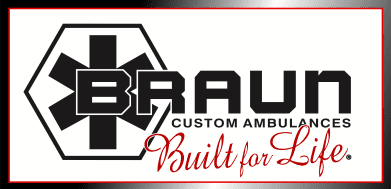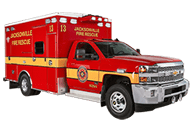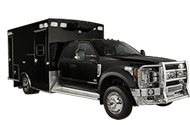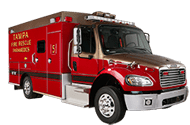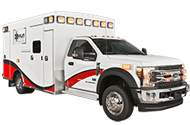IMPACT AIRBAG SYSTEM
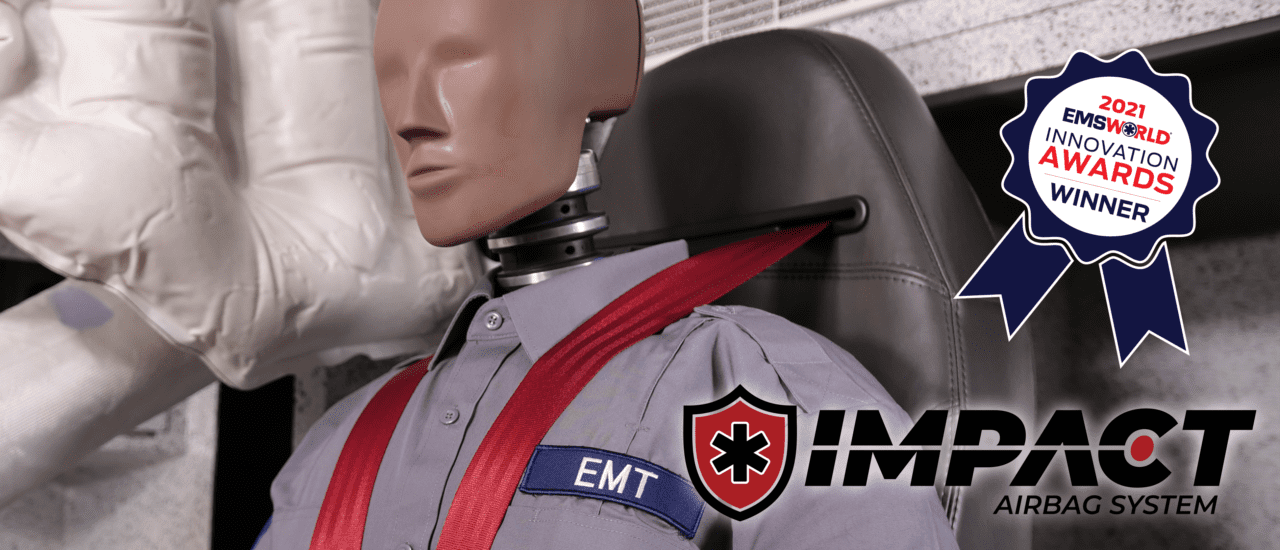
DELIVERING EMS SAFETY WITH AWARD-WINNING IMPACT
Braun Ambulances is proud to build on their legacy of safety by introducing the new IMPACT Airbag System with RollTek™ technology. Short for Interior Module Protection and Collision Technology, the IMPACT Airbag System is an EMS safety option focused on enhancing occupant protection in every seating position in the module. Introduced in August 2021, the system quickly made a name for itself. It was declared a 2021 EMS World Innovation Awards Winner! We encourage you to learn more about the newest innovation in EMS safety.
HOW DOES THE IMPACT AIRBAG SYSTEM WORK?
Currently available as an option on select Braun models, the first phase of the innovation contains three critical components:
- Strategically placed airbags using IMMI’s RollTek technology.
- Advanced seating restraints at CPR. head, fore, and aft bench seat.
- Progressive resistance padding (foam) at head strike points.
Keeping providers safe goes beyond vehicle features. It requires rethinking long-held habits and attitudes about things like staying safely belted during transport. Get in on the conversation about improving scene safety by listening to this new podcast from EMS World.
The IMPACT Airbag System is available on the following MODELS:
Occupants are protected with RollTek™ technology and energy absorption padding.
Leveraging IMMI’s RollTek™ technology, strategically placed airbags deploy in the event of a side impact induced rollover collision. The system calculates the angle of the vehicle and speed at which it is rolling to determine when to deploy airbag restraints. Inflated airbags assist in absorbing energy from the seated occupant(s). They also provide a barrier between occupants and solid surfaces. Airbags are located by the attendant seat, CPR seat, and squad bench for protection. This enhances safety for any seated position in the module.
The airbags are used in conjunction with additional, energy absorption padding at head strike points. A multi-density foam pad is located forward of the CPR seat position. A single-density foam with increased energy absorption is positioned in the action area. Numerous combinations and materials were tested using high tech cannon fires, reverse-firing servo sleds, and instrumented crash test dummies to identify the best solution.
The result was a combination of materials that reduce HIC score values by more than half. HIC, which stands for Head Injury Criteria, is an important consideration in ambulance safety testing. Head trauma is the most frequent non-fatal injury reported in rollover accidents. Enhancing head protection increases the rate of survivable impacts.
THE SAFEST WAY TO RIDE IN AN AMBULANCE IS BELTED INTO A SEAT.
While airbags and padding add significant protection to the module in the event of a side impact induced rollover, a big part of staying safe inside an ambulance is using a seat belt. Just like riding in a car, the importance of staying belted cannot be stressed enough. The IMPACT Airbag System is only effective when occupants are safely belted into their seats.
Existing seating restraint systems in Braun ambulances already meet industry requirements for frontal, side, and rear impacts. 4-point seat belts with one-click, single buckles are available on attendant seats. Advanced restraints are also available for CPR, head, fore, and aft bench seats. In addition, Braun seat backs are composed of a multiple density foam, which also helps to absorb energy on impact. Customers are encouraged to work with a Braun Ambulances sales representative to identify the best seating options for their needs.
